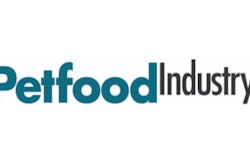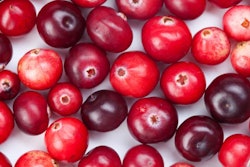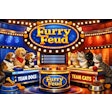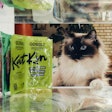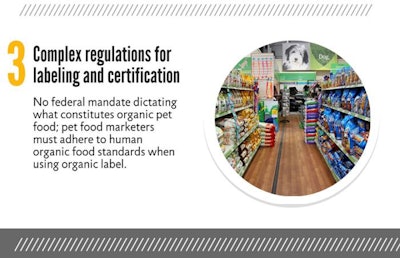
Organic pet food and treat brands entered the market with a burst of rapid growth ten years ago, but then growth stagnated, wrote David Sprinkle, published and research director of Packaged Facts, in Petfood Industry. He identified three main challenges that have held organic pet food brands from fulfilling their potential, though Sprinkle believes the industry may soon overcome these obstacles.
1. Ingredient supply
The growth in popularity of organic foods in human markets means that suppliers are already stretched thin. In addition, many ingredients in pet foods, such as fish and other novel proteins, are not readily available in organic form.
Those supply issues may be resolved as production of organic ingredients increases. For example, retailers such as Kroger and Costco have invested in farms to ensure long-term supply of store-brand organic products.
2. High prices
Higher-quality ingredients necessarily mean higher prices, and pet food companies may be gun-shy about marketing, and consumers about paying the cost for, what amounts to a beyond super-premium product.
However, as superpremium pet food marketers seek more definitive ways to distinguish themselves from the rest of the natural pack, products with organic claims may become a next logical step.
3. Complex regulations
With no federal mandate dictating what constitutes organic pet food, pet food marketers using the organic label must adhere to human organic food standards. Alternatively, pet food marketers may find it more tenable to stick with the “natural” label claim.
Organic pet food market share
Perhaps as a result of these three challenges, purchasing rates for organic pet food have stagnated and even fallen over the past few years, as tracked by Simmons Market Research surveys from 2012 to 2014 and analyzed by Packaged Facts (see infographic below). Organic pet food sales make up less than one percent of the market in the pet specialty channel, and market penetration in mass outlets is even smaller, according to Gfk data.


